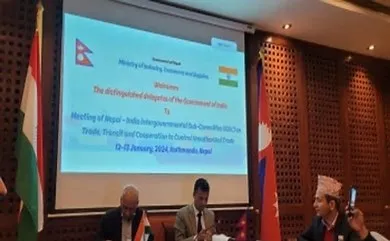Sustainable agriculture is at the core of all sustainable development goals. There has been considerable discussion over the past 30 years on how to define “sustainable agriculture”. As agriculture contributes to development–as a source of livelihood and as provider and user of environmental services–the 2030 agenda suggests that all sectors, including agriculture, be considered from three dimensions of sustainability: economic, social and environmental. In the past, it had been defined primarily along environmental criteria, including soil health water management etc. In the recent years, there has been a realization that being sustainable reaches much further, to include economic and social dimensions. If a farm is not economically sound or not resilient to external shocks, or if the well-being of those working on a farm are not considered, then a farm cannot be sustainable. This indicator was developed through a multi-stakeholder process involving statisticians and technical experts from countries, international organizations, national statistical offices, civil society and the private sector. Productivity, profitability, resilience, land and water, and well-being being of the farmers are key to attain sustainable agriculture.
Farming, as everyone knows, constitutes, 14 % of Indian economy. As per the national GHG inventory, the agriculture sector emits 408 MMT (million metric ton) of CO2 equivalent. Rice cultivation is the third highest source (17.5%) of GHG emissions in Indian agriculture after enteric fermentation (54.6%) and fertilizer use (19%). Conservation farming, zero budget farming, climate resistance seeds etc. are some of the suggestions which have been in the forefront for long. However, farming deals with conflicting targets, feeding the poor and produce, distribute, and trade in agriculture fields on an equitable basis. As a result, agricultural reform across the country has been one of the most daunting tasks for the government. For instance, the three-farm bill which was demanded for long by several agricultural farmers had to be repealed on the back of huge protests from the farming community. While the three farm laws were seen to encourage small land holders, expand rural income opportunities, it was also seen as a serious encroachment of corporatization on peasant agriculture. Corporate encroachment on peasant agriculture may have several connotations, like, corporates taking away a part of peasants’ income, either directly via simply squeezing the peasants’ share, indirectly passing on price falls to peasants but not price rises; it necessarily entails a change in land-use, from producing foodgrains of which the advanced capitalist countries have a surplus that they wish to sell to the third world, to producing such crops as they need, either tropical non-food crops which they cannot grow, or crops that they can grow, but only seasonally.
Corporate encroachment on peasant agriculture, therefore, necessarily entails a reduction in foodgrains output and a diversion of acreage from foodgrains to other crops needed by the affluent population. The shift may seem to be profitable for farmers, as India have seen record foodgrain production which many a times led to distressed sales in the market. Therefore, the shift from foodgrain to higher profitable crops may have led to higher income for the farmers and reduce the economic cost of the government to maintain the huge buffer stock in FCI. However, the fact remains, there are multiple risks of such drastic steps. For instance, purchasing power typically shrinks when a country moves away from producing foodgrains. Many of the substitute crops that would be grown in lieu of foodgrains are in fact much less employment-intensive than foodgrains, so that growing them means a reduction in agricultural employment, and hence in purchasing power with the people.
Clearly, the path towards sustainable agriculture requires deeper understanding and participation of people from the farm itself.
Dr Minakshi Chakraborty is a senior economist at Mahindra and Mahindra. The views are personal.

















